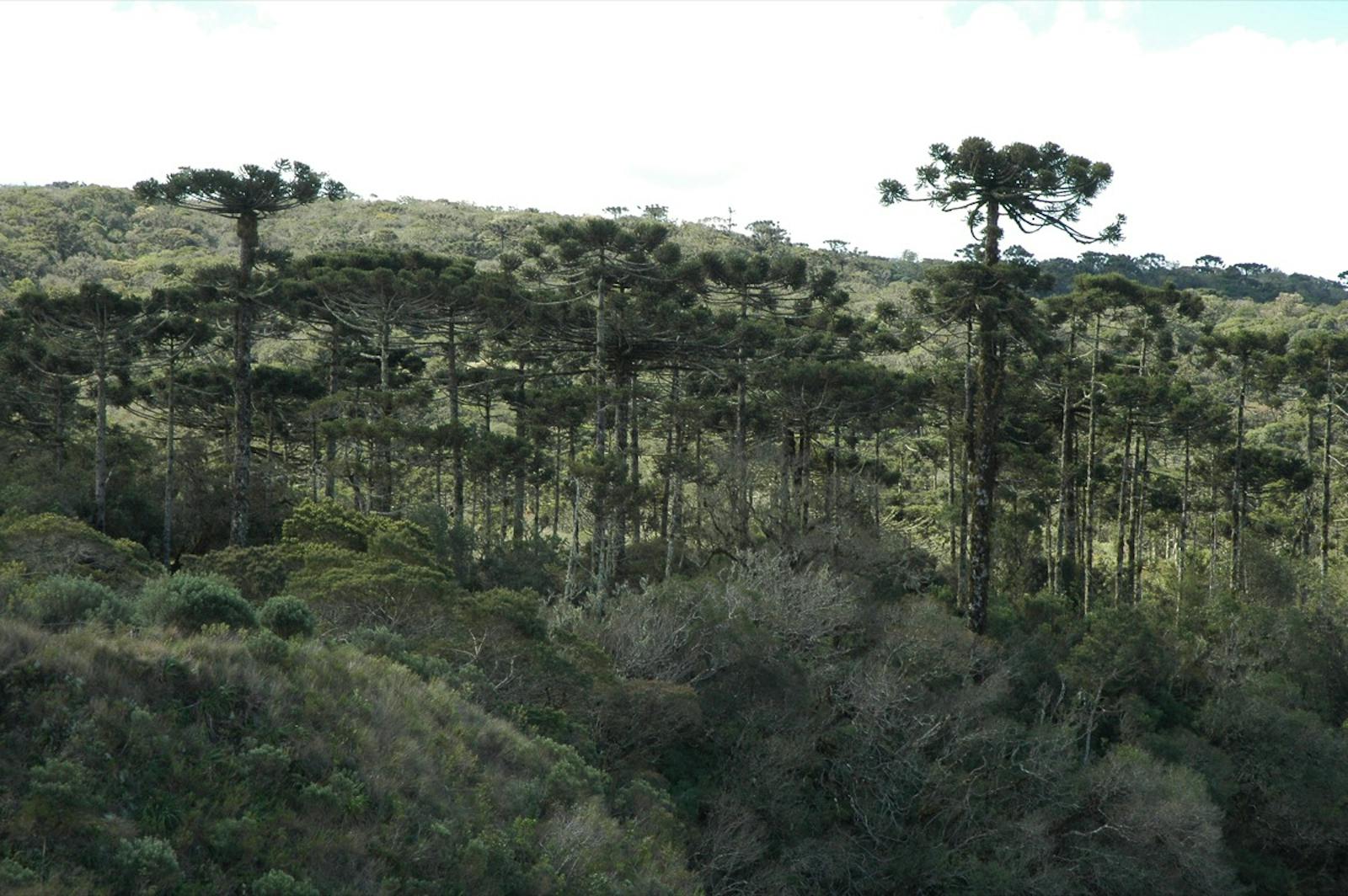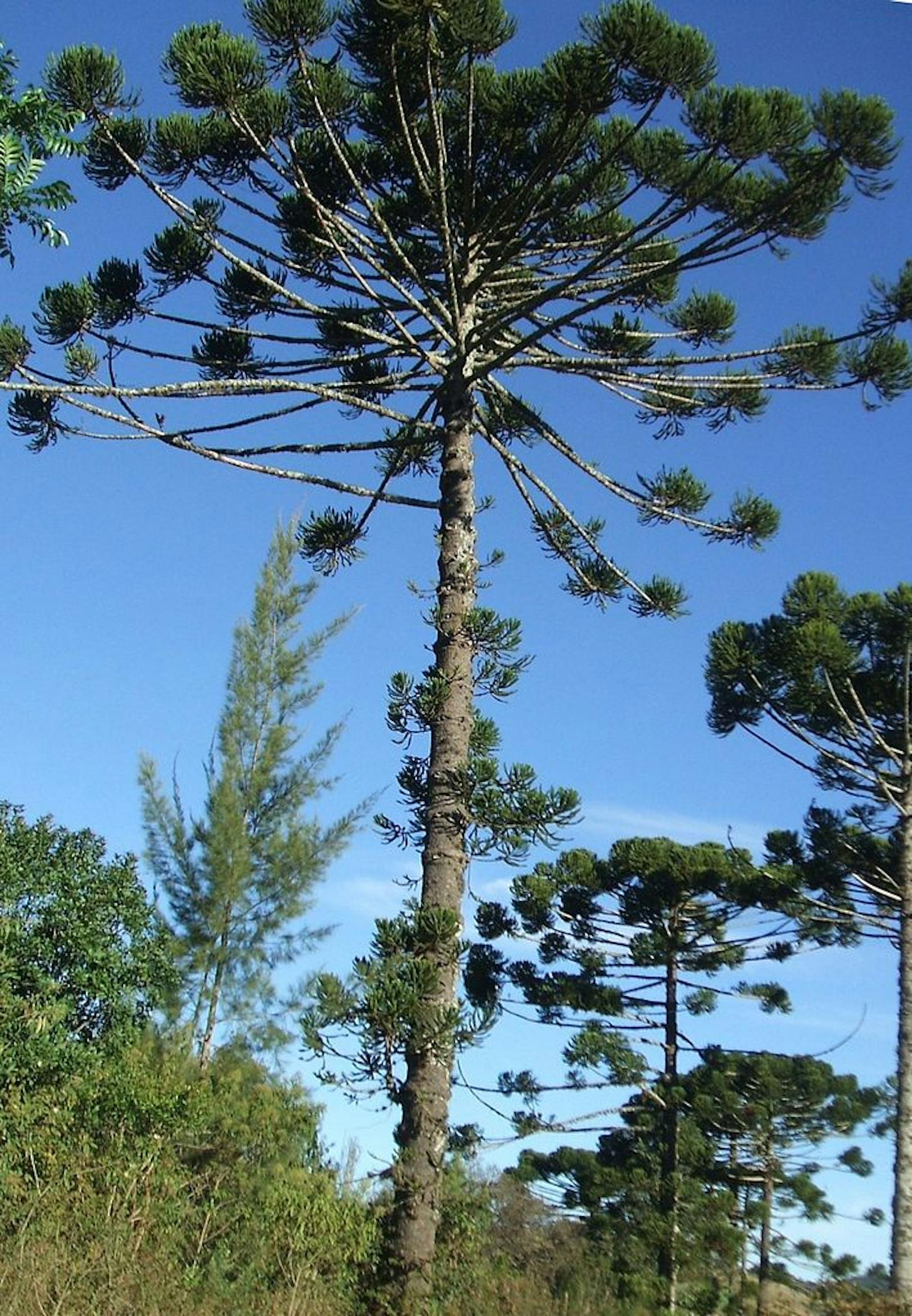Araucaria Moist Forests
The ecoregion’s land area is provided in units of 1,000 hectares. The conservation target is the Global Safety Net (GSN1) area for the given ecoregion. The protection level indicates the percentage of the GSN goal that is currently protected on a scale of 0-10. N/A means data is not available at this time.
Bioregion: Brazilian Atlantic Moist Forests (NT14)
Realm: Southern America
Ecoregion Size (1000 ha):
21,655
Ecoregion ID:
440
Conservation Target:
36%
Protection Level:
1nt1
States: Brazil, Argentina
Araucaria, or monkey puzzle tree, is a coniferous tree that can reach up to 50 m in the forest and can be found as dense stands or a lone sentinel rising above the forest canopy. It is one of the two pines which inhabit and characterize these subtropical forests in southern Brazil. The Araucaria tree species in a living fossil, thriving even in the age of the dinosaurs: some paleontologists have suggested that brontosaurus evolved long necks to reach their high canopies. Today they are iconic reminders of ancient times, and although they can be found in nurseries and gardens around the world, they are becoming increasingly rare in their native habitat.
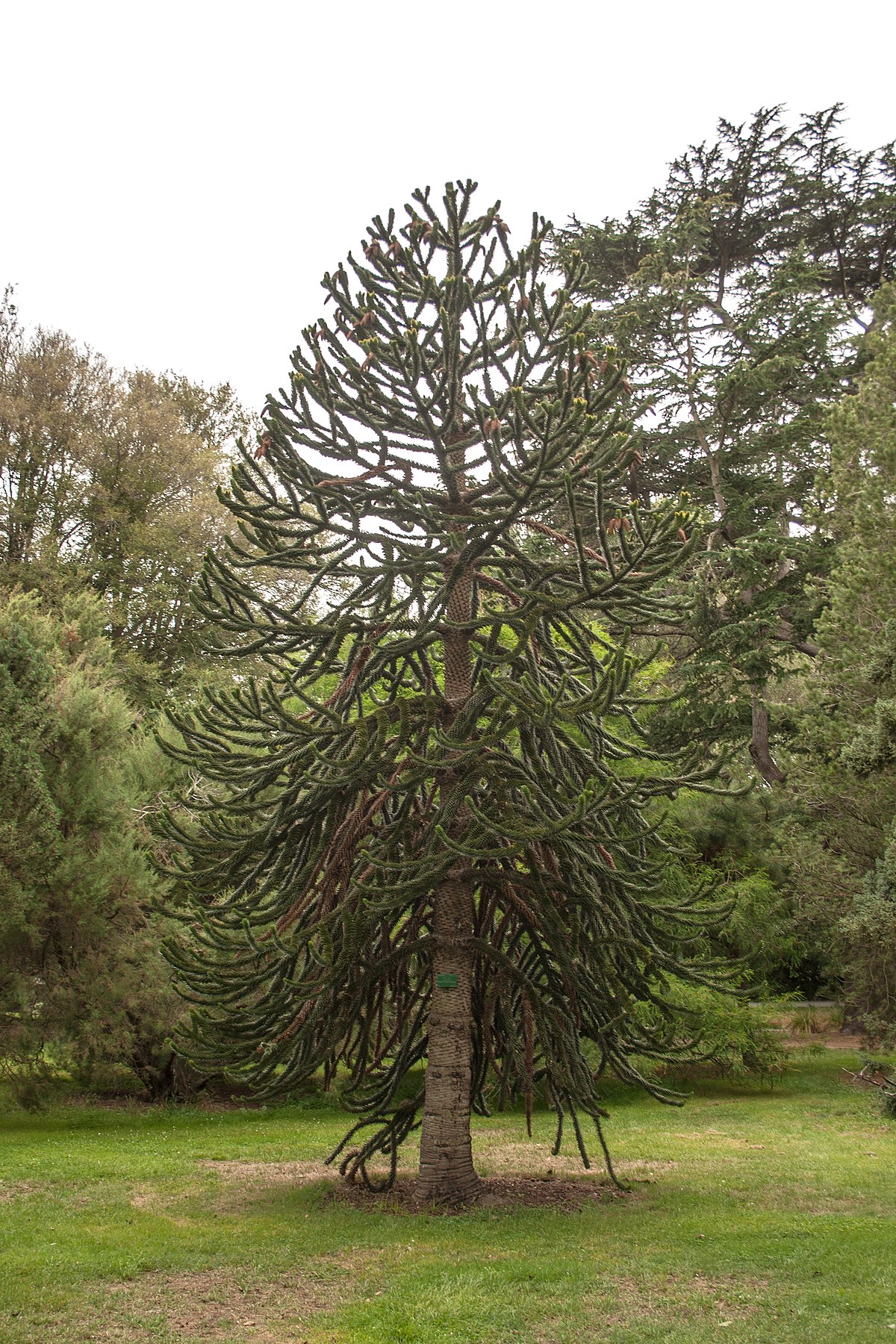
The flagship species of the Araucaria Moist Forests ecoregion is the Araucaria tree. Image credit: Creative Commons
Araucaria Moist Forests occur in southern Brazil and northeastern Argentina. This ecoregion is bordered on the north and west by the Alta Paraná Atlantic Forests, on the south by the pampas grasslands, and on the east by Serra do Mar Coastal Moist Forests. The climate is subtropical with frequent freezing temperatures and no dry season. Annual precipitation shows a significant variation between 1,300 and 3,000 mm. Most of this ecoregion is situated on sedimentary rock of the Paraná plateau.
These forests are spread from middle-level plateaus, at 500 m, to the high slopes of Serra da Mantiqueira, at 1,600 m. The main vegetation is that of the Atlantic moist forest, with a particularly tall 45 m emergent stratum of the Brazilian Araucaria. Canopy layers are rich in species of flowering plants from the laurel, myrtle, and legume families.
Although apparently homogeneous, these forests form complex mosaics of plant associations among the pioneer Brazilian Araucaria and tree species from different types of Atlantic forest, including an interesting association of Brazilian Araucaria with grasslands. Because of its unique features of climate, geomorphology, and floristic composition, Araucaria Moist Forests are easily delineated from other portions of the Brazilian Atlantic Forest.
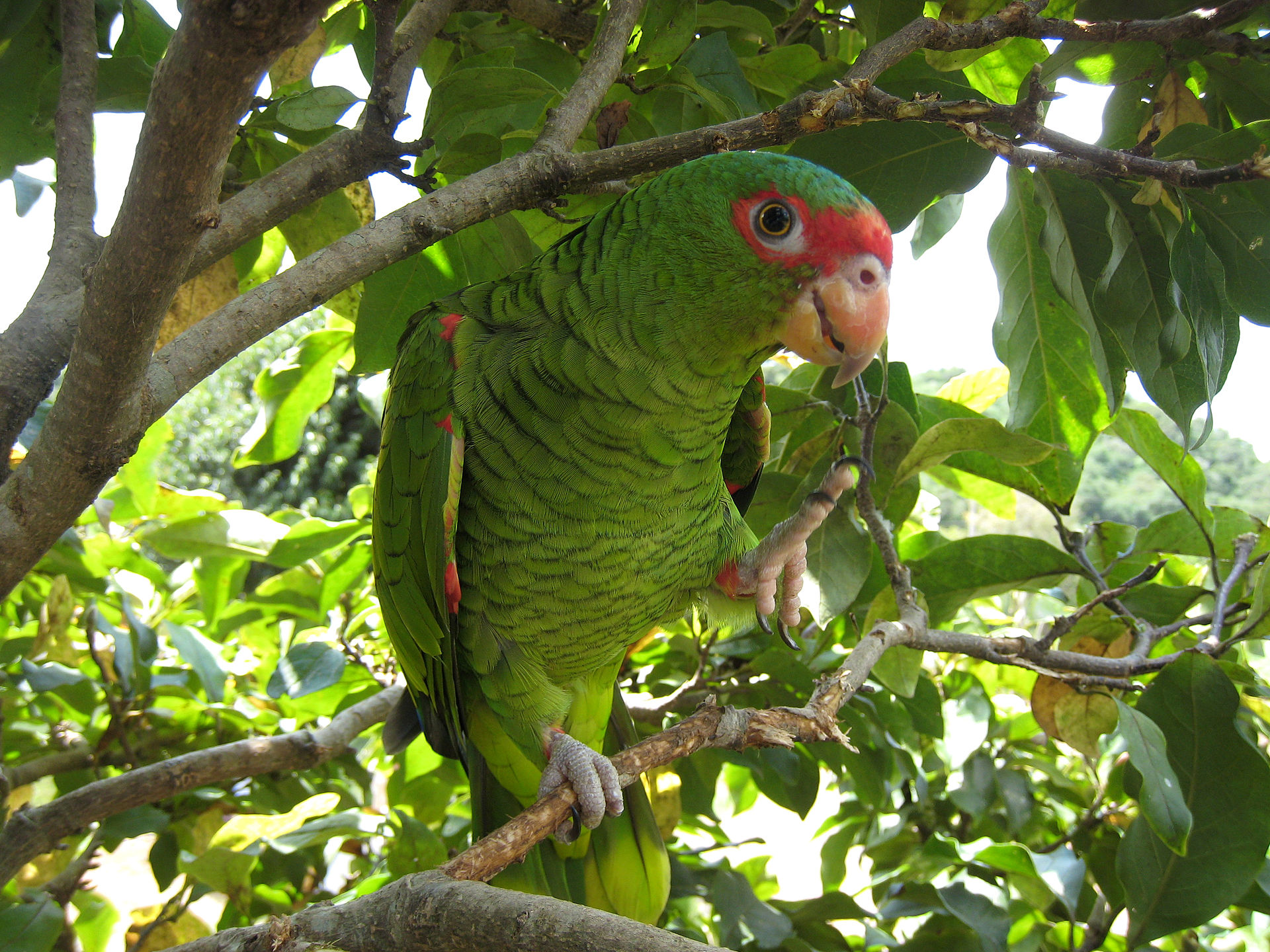
Red-spectacled amazon. Image credits: Creative Commons
In these assemblages, several endemic species are found. Of the 350 or more vascular plant species recorded in this region, 47 species are endemic. This moist forest ecoregion is also recognized as an important Endemic Bird Area for restricted range avifauna such as the Araucaria tit-spinetail, the black-capped manakin, and the endangered red-spectacled amazon. It is also home for Atlantic endemic and threatened mammals such as the brown howler monkey, which have few populations scattered in remnants of these forests. Other mammals important for conservation consideration include Guianan squirrel and Agouti paca. Threatened vascular plant species also survive here, including the Brazilian Araucaria.
These moist forests have been reduced in area by approximately 87%. The remaining vegetation is represented by about 35,000 km2 of mixed forests. Few large blocks of habitat are preserved by official protection. In addition, thousands of forest remnants surrounded by pastures and agriculture in private lands represent a significant part of remaining native vegetation. However, protected areas cover only 0.62% of the ecoregion. Illegal timber extraction and forest conversion into agricultural land represent a major threat to the future of these forests. Because of the fertile soils, agricultural interests are growing.
The priority conservation actions for this ecoregion in the next decade are to: 1) begin restoration of Araucaria forests; 2) create Private Reserves of Natural Heritage (RPPN); and 3) the establishment of legislation forbidding the exploitation of Araucaria forest remnants.
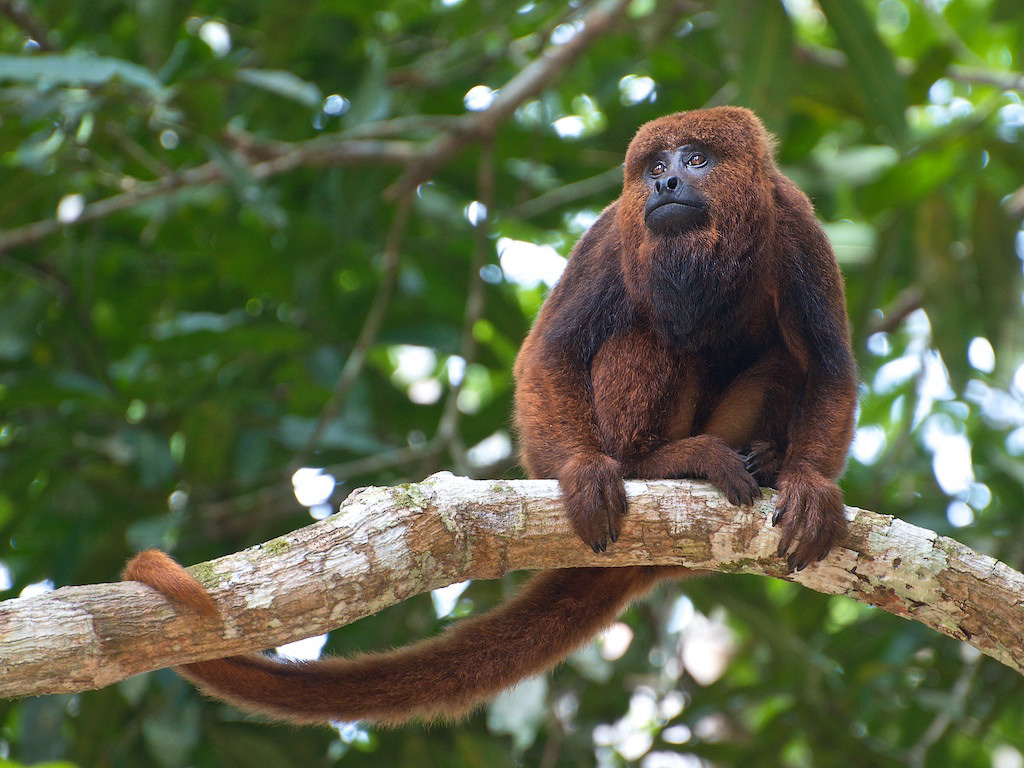
Brown howler monkey. Image credits: Peter Schoen, Creative Commons
Citations
1. da Silva, Jose Maria C. 2018. Araucaria Moist Forests. https://www.worldwildlife.org/ecoregions/nt0101. 28 June 2018.
2. Stattersfield, A.J., M.J. Crosby, A.J. Long, and D.C. Wege. (1998). A global directory of Endemic Bird Areas. BirdLife Conservation Series. BirdLife International, Cambridge, U.K.
3. Klein, R.M. 1960. O aspecto dinâmico do pinheiro brasileiro. Sellowia 12:17-44.
